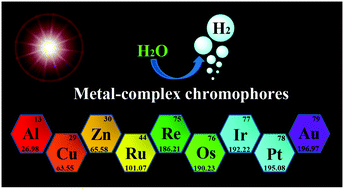Metal-complex chromophores for solar hydrogen generation
Abstract
Solar H2 generation from water has been intensively investigated as a clean method to convert solar energy into hydrogen fuel. During the past few decades, many studies have demonstrated that metal complexes can act as efficient photoactive materials for photocatalytic H2 production. Here, we review the recent progress in the application of metal-complex chromophores to solar-to-H2 conversion, including metal-complex photosensitizers and supramolecular photocatalysts. A brief overview of the fundamental principles of photocatalytic H2 production is given. Then, different metal-complex photosensitizers and supramolecular photocatalysts are introduced in detail, and the most important factors that strictly determine their photocatalytic performance are also discussed. Finally, we illustrate some challenges and opportunities for future research in this promising area.


 Please wait while we load your content...
Please wait while we load your content...